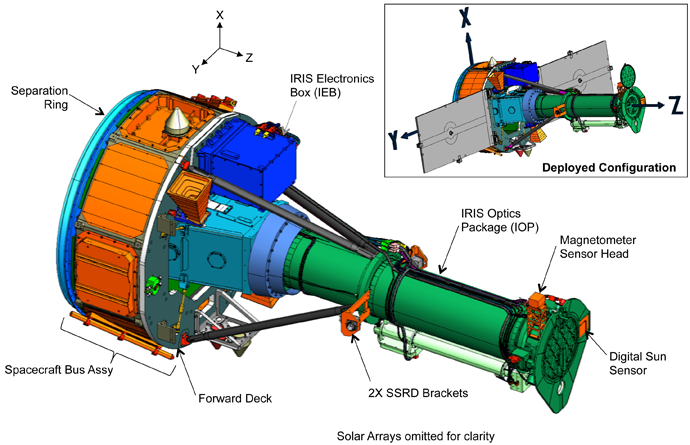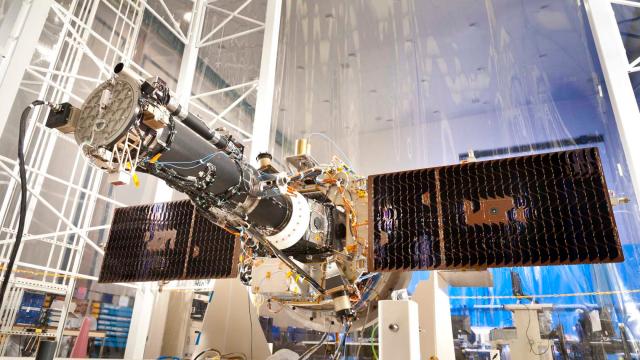The sun actually gets hotter as you travel away from its surface, jumping from 6000K there to over 1,000,000K a few million kilometres above in the corona. This effect contributes to solar flares that can damage earthbound electronics and we have no idea how it does this. But NASA is about to find out thanks to the IRIS (Interface Region Imaging Spectrograph) spacecraft that just launched from Vandenberg Air Force Base today.
The two-year IRIS project is part of NASA’s Small Explorer (SMEX) mission that has studied everything from mesospheric ice aeronomy to the interstellar boundaries of our galaxy. IRIS itself is designed to study how heat and energy propagate through the Sun’s lower atmosphere using an ultraviolet telescope and an imaging spectrograph.
“This is the first time we’ll be directly observing this region since the 1970s,” Joe Davila, IRIS project scientist at NASA’s Goddard Space Flight centre, said in a press statement. “We’re excited to bring this new set of observations to bear on the continued question of how the corona gets so hot.”
The Lockheed Martin Solar and Astrophysics Lab teamed with NASA Ames — as well as the Smithsonian, and a trio of universities — -to produce the $US120 million spacecraft. It measures approximately 2m long by 4m wide with its solar panel array deployed and weighs 200kg. Its only equipment are the 8-inch ultraviolet telescope and imaging spectrograph. While the relatively small diameter of the telescope will only allow researchers to image 1 per cent of the sun’s surface at a time, it will also resolve objects down to 240km, providing an unprecedented close-up view of our home star like an astronomical microscope, the perfect complement to NASA’s Solar Dynamics Observatory (SDO).

In line with its severe focus, the IRIS will only record data in the 5000K to 65,000K temperature range that exists between the photosphere (the sun’s surface), and chromosphere/transition region (the start of the Sun’s atmosphere). It will record spectra readings every second and snap images every five using a quartet of identical 13µm-pixel CCDs. When processed by a supercomputer running state-of-the-art 3D numerical modelling back on Earth, researchers will be able to trace the path of energy through the Sun’s lower atmosphere.
“The interpretation of the IRIS spectra is a major effort coordinated by the IRIS science team that will utilise the full extent of the power of the most advanced computational resources in the world,” explained Alan Title, the IRIS principal investigator at the Advanced Technology Center (ATC) Solar and Astrophysics Laboratory. “It is this new capability, along with development of state of the art codes and numerical models by the University of Oslo that captures the complexities of this region, which make the IRIS mission possible. Without these important elements we would be unable to fully interpret the IRIS spectra.” Assuming all goes as planned with today’s launch, IRIS’ first results should be available in the coming weeks.
